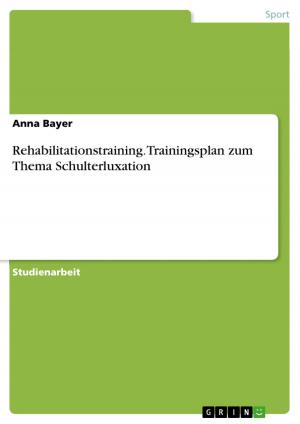| Author: | Christian Ritter, Tamara Schorn | ISBN: | 9783638482554 |
| Publisher: | GRIN Verlag | Publication: | March 24, 2006 |
| Imprint: | GRIN Verlag | Language: | English |
| Author: | Christian Ritter, Tamara Schorn |
| ISBN: | 9783638482554 |
| Publisher: | GRIN Verlag |
| Publication: | March 24, 2006 |
| Imprint: | GRIN Verlag |
| Language: | English |
Seminar paper from the year 2004 in the subject English Language and Literature Studies - Linguistics, grade: 2,0, University of Bamberg, course: International Varieties of English, 5 entries in the bibliography, language: English, abstract: The Welsh English variety can be divided into two sub-varieties: Northern and Southern Welsh English. Northern Welsh English is probably the variety with shows the most Welsh influence as the North was the area where English spread last. Southern Welsh English again can be split up into two major dialects, an Eastern and a Western one. The latter one again is a more rural dialect. The Eastern dialect is a more urban one as it is spoken in and around the cities of Wales. So Eastern South Welsh English is the dialect closest to RP and Standard English. It is also the dialect of Welsh English which shows the less Welsh substratum. Coming to speak about influences on Welsh English there are two main factors. First of all, the original mother tongue of the Welsh people, Welsh. One can make out Welsh influences on English in syntax, loanwords and pronunciation. The second main influence on Welsh English is the multitude of English English varieties spoken in the counties bordering Wales. These are mainly the varieties of South-West England. In Wales itself Welsh English or a Welsh accent has a high covert prestige, especially in the South. This is for the accent is associated with national pride and 'Welshness'. In the following, we will discuss features of pronunciation at first, then go on with the grammatical and lexical features and conclude with a short examination of the standardisation of Welsh English.
Seminar paper from the year 2004 in the subject English Language and Literature Studies - Linguistics, grade: 2,0, University of Bamberg, course: International Varieties of English, 5 entries in the bibliography, language: English, abstract: The Welsh English variety can be divided into two sub-varieties: Northern and Southern Welsh English. Northern Welsh English is probably the variety with shows the most Welsh influence as the North was the area where English spread last. Southern Welsh English again can be split up into two major dialects, an Eastern and a Western one. The latter one again is a more rural dialect. The Eastern dialect is a more urban one as it is spoken in and around the cities of Wales. So Eastern South Welsh English is the dialect closest to RP and Standard English. It is also the dialect of Welsh English which shows the less Welsh substratum. Coming to speak about influences on Welsh English there are two main factors. First of all, the original mother tongue of the Welsh people, Welsh. One can make out Welsh influences on English in syntax, loanwords and pronunciation. The second main influence on Welsh English is the multitude of English English varieties spoken in the counties bordering Wales. These are mainly the varieties of South-West England. In Wales itself Welsh English or a Welsh accent has a high covert prestige, especially in the South. This is for the accent is associated with national pride and 'Welshness'. In the following, we will discuss features of pronunciation at first, then go on with the grammatical and lexical features and conclude with a short examination of the standardisation of Welsh English.















